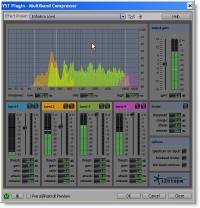

Having a clear objective helps you how to set your compressor to get the desired sound. You need to have some objective before you compress. compression is a technique to reduce higher volumes above the threshold. Theres a few compressors that audition offers as. Examine why you should need to compress in the first place. What is compression in audio editing softwares (audacity &, Adobe audition). Best for: Percussion, electric bass, vocals, and live sound. So now in this lesson, were going to be going over how to use a compressor. If you are new to audio compression, you should need to read this introductory tutorial on dynamic range compression. In multi-track view, it is non-destructive because the settings are implemented in sessions rather than to the direct audio wave.ģ.) Go to File – Open and then load the audio wav file that needs compression. Make sure to back up the original audio before saving any changes. However, take note that doing changes in Edit view can destroy the original audio material. But let’s just use the Edit view because it’s simple. Bear in mind that you can also implement this process in the multi-track view by loading the built-in effects in multi-track racks.

This tutorial is written using Adobe Audition 1.5 but the concepts illustrated in this tutorial can be applied to.

In this way, you will be relying on the built-in compressor included in Adobe Audition called as the dynamics processor. To get started, follow the steps below:Ģ.) Go to Edit View. This is a tutorial how to implement dynamics processing or compression in Adobe Audition without plug-in. This tutorial is written using Adobe Audition 1.5 but the concepts illustrated in this tutorial can be applied to modern versions. In this way, you will be relying on the built-in compressor included in Adobe Audition called as the “dynamics processor”. This is a tutorial how to implement dynamics processing or compression in Adobe Audition without plug-in.


 0 kommentar(er)
0 kommentar(er)
